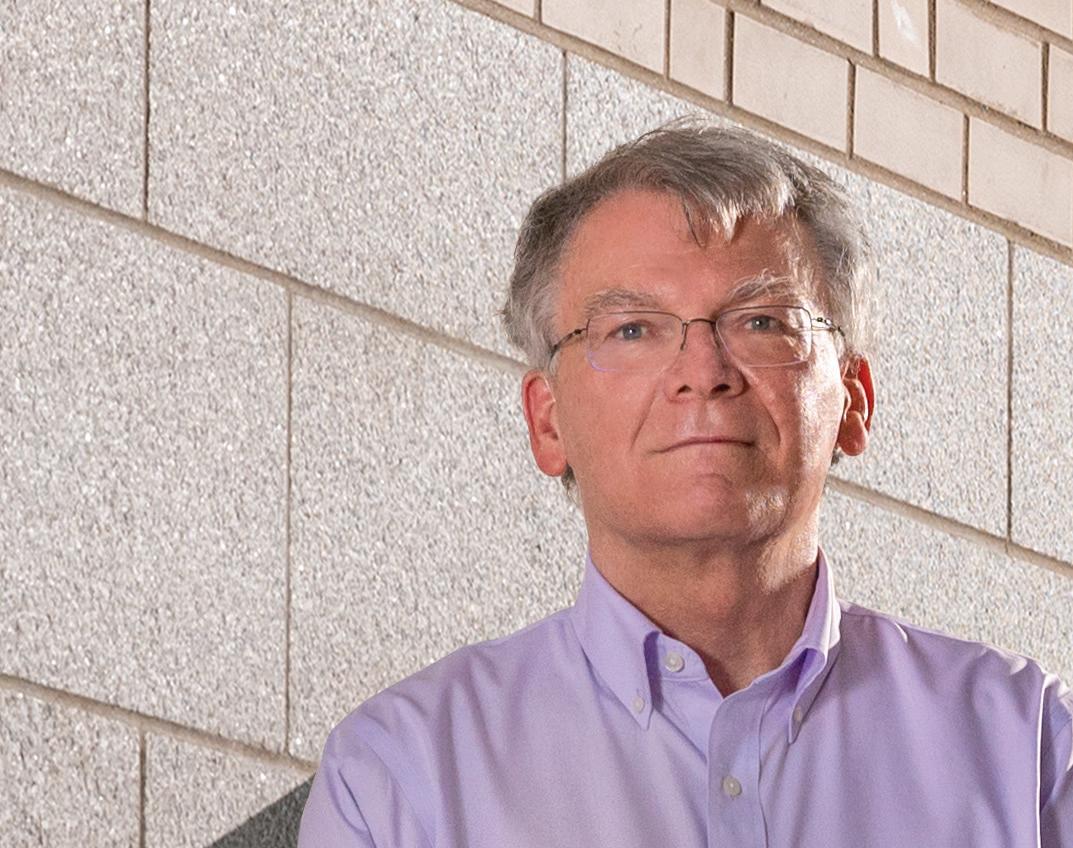
3 minute read
Radiobiology and Radiotherapy
Rallying Resources Around DNA Repair Research
When it comes to unlocking the secrets of DNA repair, Ranjit Bindra, MD, PhD, doesn’t think in terms of just resources. The Professor of Therapeutic Radiology and Pathology favors a far mightier word: armamentarium. Based on the Latin word for “armory,” it describes the collection of medicines, equipment, and techniques.
Yale Cancer Center has an especially impressive armamentarium in the study of BRCA1 and BRCA2, proteins involved with DNA repair that, when mutated, can cause breast, ovarian, prostate, and pancreatic cancers. So, when a $1 million grant became available for BRCA research from the Gray Foundation in 2018, a team of Yale experts combined their collective skills to secure the gift.
In the two years since, Yale’s team has made significant advances in targeting the BRCA-dependent DNA repair axis for cancer therapy. “Both the BRCA1 and BRCA2 protein are involved in DNA repair,” said Megan King, PhD, Associate Professor of Cell Biology and of Molecular, Cellular and Development Biology and co-leader of the Radiobiology and Radiotherapy Research Program at Yale Cancer Center. “However, the work we’ve done has shown us that they have fundamentally different mechanisms. That’s important, because typically in clinical trials we lump together patients with BRCA1 and BRCA2 mutations. We need to think about these patient populations differently.”
Those mechanisms affect which kind of therapies might work once cancer patients relapse on PARP inhibitors. For example, Dr. King has identified that if BRCA1 tumors stop expressing the 53BP1 or REV7 protein, they become resistant to PARP inhibitors. That’s because the absence of those proteins allows a third enzyme, called the Bloom syndrome protein (BLM), to resume the resection of DNA double-strand breaks and go into repair overdrive called “hyper-resection.”
Dr. King’s research identified BLM as a novel therapeutic target. She already has a candidate in mind for the job: a new class of drugs called ATR kinase inhibitors. “BLM’s hyperresection is a vulnerability that makes it sensitive to ATR inhibitors,” Dr. King explained. She is working to design a clinical trial for ATR inhibitors in BRCA1 patients with fellow Gray Foundation team member Patricia LoRusso, DO, Professor of Medicine and Associate Cancer Center Director of Experimental Therapeutics.
The team’s expert on BRCA2 is Ryan Jensen, PhD, Associate Professor of Therapeutic Radiology and Pathology. He was the first scientist to purify and study the properties of the full-length BRCA2 protein. In collaboration with AstraZeneca, Dr. Jensen has focused on three BRCA2 reversion alleles that reactivate DNA repair functions in tumor cell DNA from ovarian cancer patients who relapsed on a PARP inhibitor. He’s currently researching whether these alleles alone cause resistance to PARP inhibitors. Dr. Jensen’s team hopes this “reverse translation” approach will accelerate our understanding of why BRCA2 plays such a crucial role in responding to PARP inhibitors.
Enter Dr. Bindra, whose expertise in drug development drives the translation of these laboratory targets into patient therapies. His high-throughput testing capabilities enable him to conduct 96- and 384-well plate-based screening assays in PARP-naïve and resistant cell lines. Dr. Bindra can look at 384 tiny wells overnight and analyze the images and discover patterns automatically.
Using Dr. Bindra’s library of DNA repair inhibitor and damaging agents, he mixes them to create new therapeutic combinations to replace current PARP inhibitors. “When we do this testing in an academic setting instead of a pharmaceutical one, we’re able to profile all drug candidates out there,” Dr. Bindra said.
These cell lines have proven invaluable in Yale’s DNA repair research. Faye Rogers, PhD, Associate Professor of Therapeutic Radiology, tapped the library for a cell line in her research on the use of endophytes to develop novel cancer fighting compounds. Endophytes are fungus or bacteria known as an untapped source for finding novel bioactive natural products.
An undergraduate student in Dr. Rogers’ lab collected endophytes while in Ecuador with Yale’s Rainforest Expedition and Laboratory course. Dr. Rogers identified one that produces a compound that inhibits DNA double-strand break repair in cancers with repair deficiencies. “We’re now moving forward to come up with a synthetic version of this compound and conducting some medicinal chemistry to improve its efficacy,” she said.
Dr. Rogers has returned the favor to the Bindra library. She has advised Dr. Binda’s students in how to synthesize new classes of DNA repair inhibitors that will further expand their testing capabilities of new compounds. “When you bring together people with different skills and perspectives,” Dr. Bindra said, “it adds so much more value to the conversation.” And adds yet more invaluable tools to Yale’s DNA repair armamentarium.










